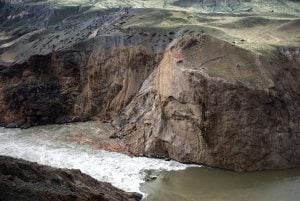As Canadian salmon make their way along the West Coast, up towards Alaska and back down to B.C. again, millions are getting caught in Alaskan fishing traps, potentially impacting endangered Pacific salmon runs.
Studies have found that Alaskan fisheries are making a lot of their catches as salmon begin migrating back down to B.C. and Washington, estimating that in 2022, 2.1 million of those fish had a Canadian origin. In 2021, Alaska caught 800,000 sockeye alone, most of which came from B.C., according to genetic sampling. This over-catching is also assumed to harm the endangered killer whale population by removing a significant food source.
While both countries partake in the Pacific Salmon Treaty, ensuring both receive benefits equal to their salmon production, conservationists are pushing for a reevaluation of the treaty to further limit the amount of fish caught. However, this renegotiation won’t take place until 2028 at the earliest, which may be too late for the salmon.
In addition to overfishing, B.C.’s degrading watershed habitat and unstable ocean conditions are further depleting the salmon population and encouraging them to move towards the Alaskan traps.








